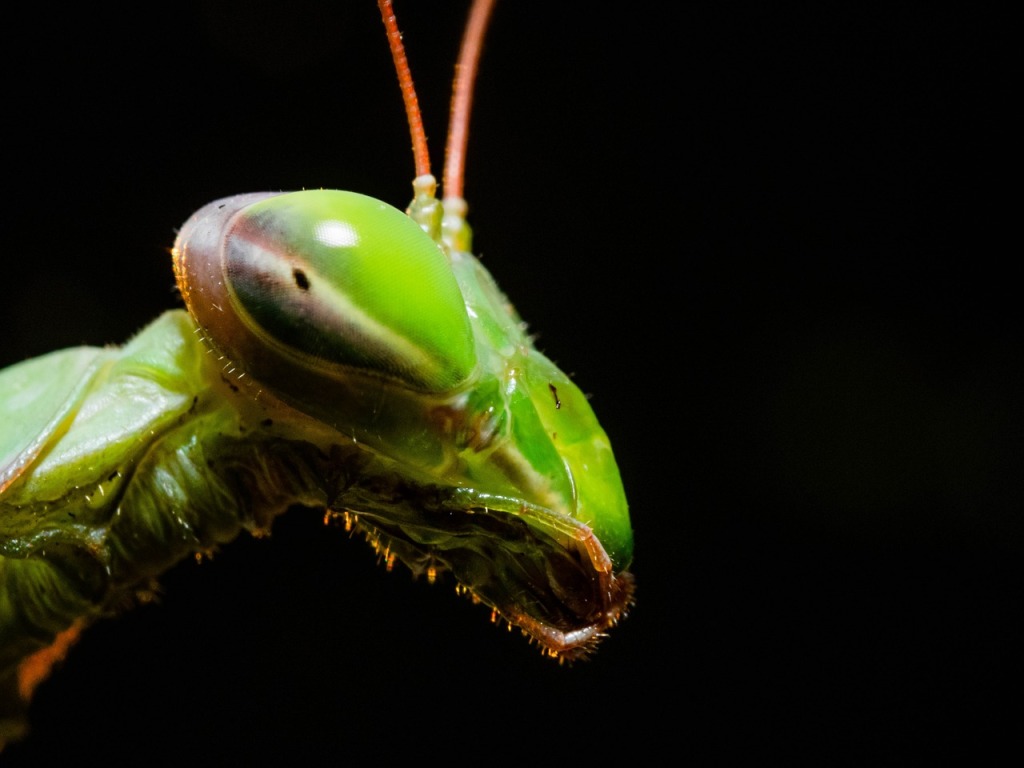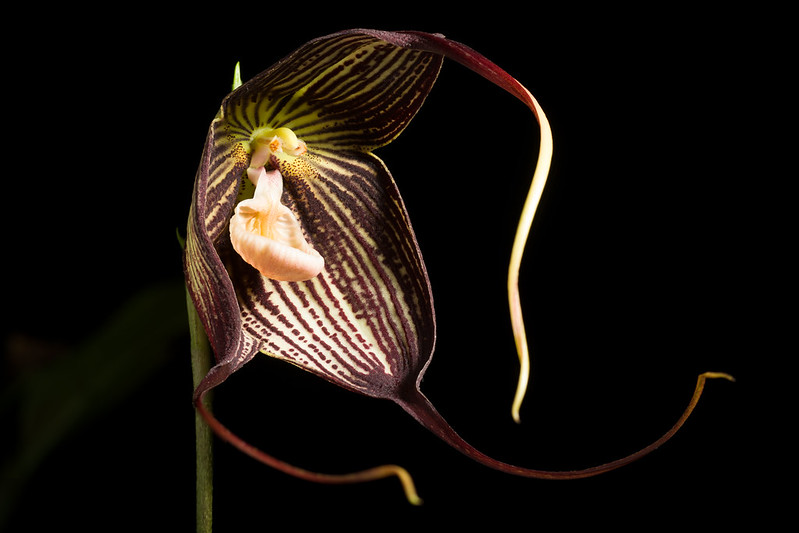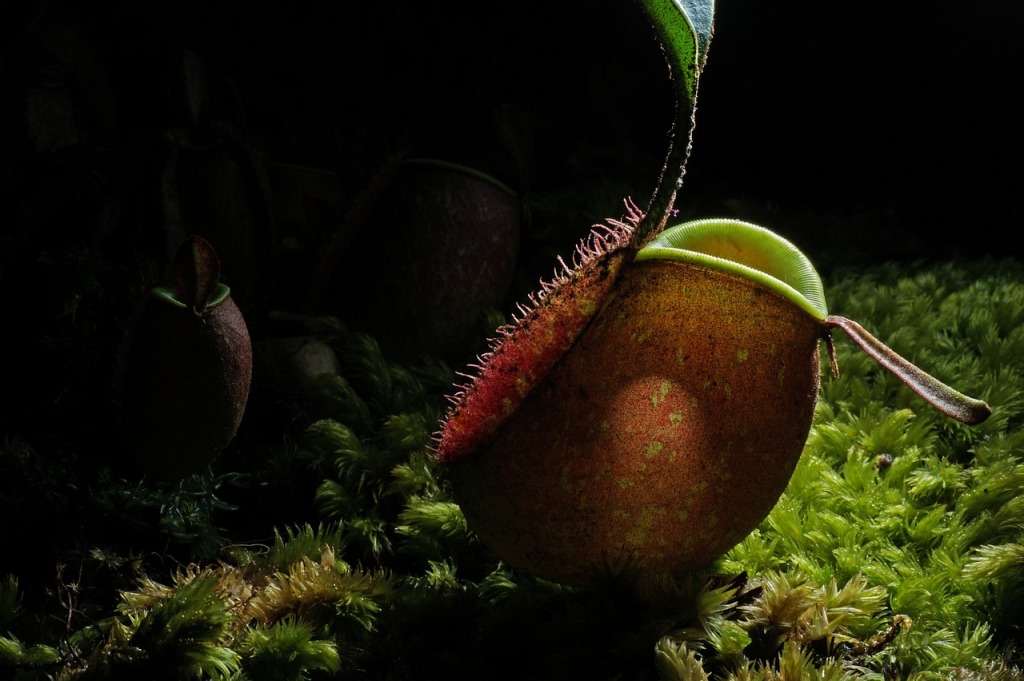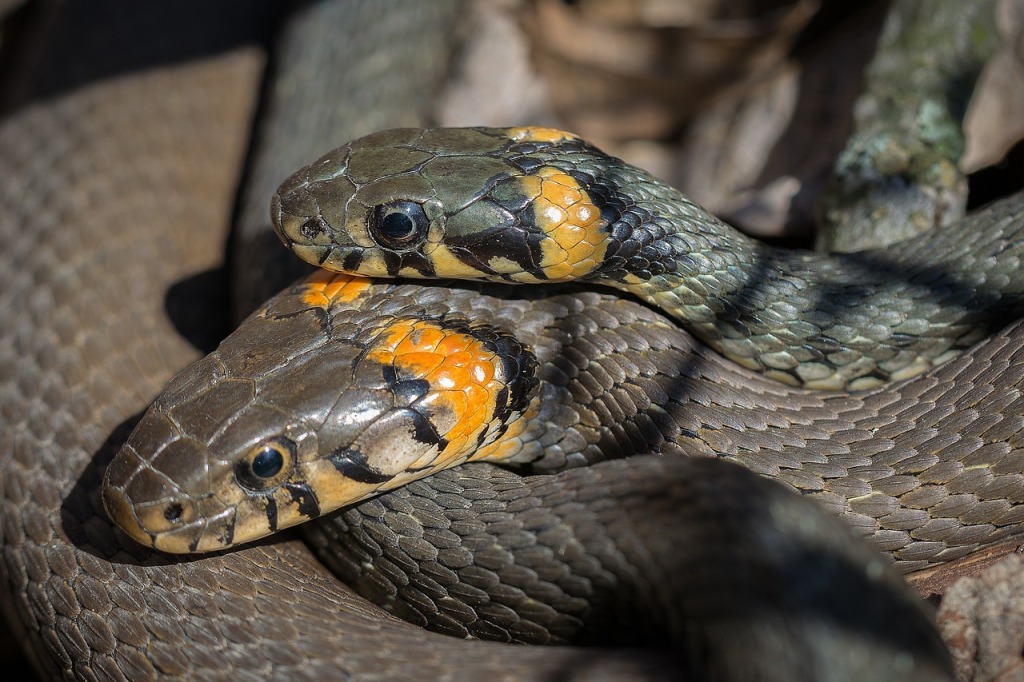Friends, we all like a sinister vine that softly creeps up behind someone and snakes around their ankle, ensnared before they even realize the vine is there. I take no issue with entangling when used appropriately to create drama.
What I do take issue with is that when you are looking for “nature-themed” monsters for, say, a low-level nature dungeon, you tend to have these options:
- Ordinary forest animals
- Giant ordinary forest animals
- Plant monsters whose only cool ability is that they have vines or roots to entangle their prey (and yes even the ones shaped like humanoids)
The Flee Mortals! book has superior plant monsters with interesting abilities, and yet even they fall into this cliché of entangling. I want nature-themed monsters that are dynamic—that move and have powerful attacks and might even be clever. Stalling combat by wrapping player characters in vines is boring.
It is not an acceptable solution to make a “plant creature” by taking a different forest animal and sticking leaves on it (exhibit A: Skiddo). This is not only absurd; it is lazy.
So here I am to offer a few plant and insect monster concepts with absolutely zero vines, nary a single root, and is nowhere in sight a goat that got into a bad tiff with some shrubbery.
- Iridescent Dragonflies
- Emerald Beetle
- Stalking Mantis
- Swarm of Blood Poppies
- Devouring Bloom
- Monkey Orchid
- Closing Thoughts
Iridescent Dragonflies
Physical Appearance:
These dragonflies are extraordinarily huge for insects, small for monsters, and are probably about the size of a yoga ball. Their bodies are copper or blue, and their wings shimmer magnificently as though covered with tiny mirrors.
Hunting Behavior:
Iridescent dragonflies hunt in pods. They concentrate the light shining off their wings into their prey’s eyes to blind them. The iridescent dragonflies then hover above their prey, spitting acidic saliva upon it. When the creature is dead, the iridescent dragonflies use their long straw-like tongues to slurp up the remains.
Habitat:
The iridescent dragonflies tend to nest near open bodies of water, such as a pond or a stream. They hide in the dense vegetation around the water body and surprise prey that venture into the open.
Emerald Beetle
Physical Appearance:
Emerald beetles are quite large, roughly the size of a coffee table. They have a thick carapace of a metallic green color that offers protection from attacks. Their underbelly is comparatively soft and vulnerable, and thus they avoid exposing it. Emerald beetles can scuttle with unexpected speed on their six legs. They can also fly short distances, but they will do this only to escape a larger predator.
Hunting Behavior:
Because of their large size, emerald beetles cannot chase down most creatures. They hunt by concealing their bodies in a cave or tree hollow, and when an unsuspecting creature gets close, the emerald beetle snaps it with their strong mandibles. A creature caught by the mandibles is rarely able to escape.
There have been reports of emerald beetles using a peculiar defensive mechanism in which they vibrate at high speeds, creating a double image of themselves and making it difficult for predators to hit them.
Habitat:
Emerald beetles reside in dense forests with ample places to hide in wait for prey. They may even take up residence in a toolshed or other person-made structure that offers concealment.

Stalking Mantis
Physical Appearance:
No one who has seen a stalking mantis up close has lived to describe it. However, witnesses report that they are green or beige in color and stand taller than a person. A stalking mantis has large compound eyes, enabling them to see in all directions. Their forearms end in long, hardened cuticles which are razor sharp. Their secondary arms have strong hand-like palps that they use to grab their prey. The powerful legs of a stalking mantis enable them to leap at great height and speed while hunting, aided by their glassy wings.
Hunting Behavior:
Stalking mantises hunt at night. They move quickly and silently on their long legs, trailing prey for as long as a mile before attacking. A stalking mantis will typically target the weakest creature in a group. The stalking mantis grabs the prey and leaps away to devour them. Any creature unfortunate enough to cut with its bladelike forearms will develop a bleeding wound which is slow to heal. Such a wounded creature may very well become the stalking mantis’s next meal.
Habitat:
Stalking mantises prefer pine forests and other areas with tall trees and limited underbrush. During the day they sleep propped up on a tree branch, their bladed arms folded across their chest.
Swarm of Blood Poppies
Physical Appearance:
When standing still, a swarm of blood poppies is nearly indistinguishable from a cluster of ordinary red poppies. The key differences are that the blood poppies have a deeper red color than ordinary poppies and their blossoms tend to turn towards creatures as they pass, seeking potential prey. When feeding, the tiny teeth of a blood poppy are clearly visible.
Hunting Behavior:
Blood poppies exude a heavy perfume to attract and disorient their prey. Collectively, the blood poppies can emit a burst of radiant energy to knock down a creature. Once the creature is felled, the blood poppies begin feasting on its blood.
Habitat:
Blood poppies favor fields and other grassy areas. They are especially dangerous when near roads, farm fields, or other locations frequented by people and livestock.
Devouring Bloom
Alright, I know what I said about vines. If you must have a plant creature with vines, here is one from my former GM that made a memorable encounter.
Physical Appearance:
The first sign of a devouring bloom is an odor of death and decay. The devouring bloom is a large flower that grows directly on the ground. Its petals are vivid red dotted with white, and in its center is a powerful beak. The devouring bloom has two long vines which can extend up to thirty feet.
Hunting Behavior:
The devouring bloom slowly extends its vines along the ground towards vibrations it can sense moving through its domain. When a creature touches a vine, it immediately wraps tightly around the creature. The devouring bloom draws in the vine with a snap, bringing its prey within reach of its hungry beak.
Habitat:
The devouring bloom thrives in jungles with dense undergrowth that conceals its vines from unsuspecting prey.

Monkey Orchid
Physical Appearance:
Monkey orchids are extraordinarily frightening plant-like creatures that feed off mental energy. The face of a monkey orchid resembles a grinning monkey in a hood of dark petals. From their head protrude three slender limbs, and each limb has long fingers that they use to cling to different surfaces. When possible, a monkey orchid will teleport short distances rather than climb.
Hunting Behavior:
Young monkey orchids often attack in groups of two or three, whereas older and larger monkey orchids hunt alone. The tactics are the same regardless of size. The monkey orchids first create a magical darkness which extends about twenty feet in all directions. They then emit a shrill shriek that is a direct assault against their prey’s mind. Finally, the monkey orchids latch onto their prey’s head, psychically draining its mental energy. The orchid monkeys leave the carcasses behind for flesh eaters to scavenge.
Larger monkey orchids have been known to mentally enthrall their prey, forcing the creature to come closer against their will.
Habitat:
Monkey orchids live in tropical and semi-tropical areas with high humidity and low light filtering through a dense canopy. They like to conceal themselves in shadowed areas and are most active at twilight.
Closing Thoughts
My players fought a pod of iridescent dragonflies recently, and they enjoyed the encounter. Whenever we face a new monster there is always an initial sense of caution and wonder of “what can it do?” I think that is the way tabletop roleplaying games ought to be—exploring and playing to find out what happens. A small amount of unpredictability in monsters goes a long way.
I hope you enjoy these monsters and are inspired by nature to create your own.




Leave a comment